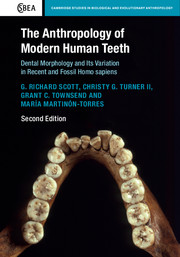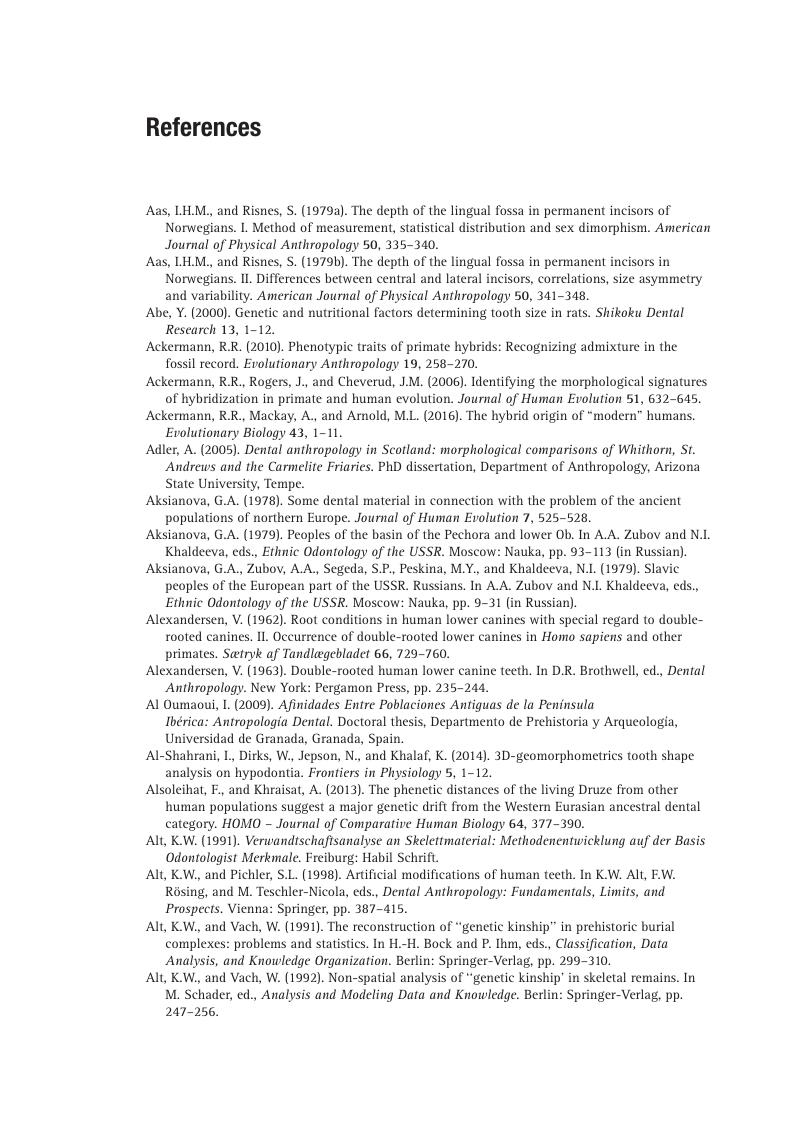 The Anthropology of Modern Human Teeth
The Anthropology of Modern Human Teeth Book contents
- The Anthropology of Modern Human Teeth
- Cambridge Studies in Biological and Evolutionary Anthropology
- The Anthropology of Modern Human Teeth
- Copyright page
- Dedication
- Contents
- Preface
- Acknowledgments
- Prologue
- 1 Dental Anthropology and Morphology
- 2 Description and Classification of Permanent Crown and Root Traits
- 3 Biological Considerations: Ontogeny, Asymmetry, Sex Dimorphism, and Inter-Trait Association
- 4 Genetics of Morphological Trait Expression
- 5 Geographic Variation in Tooth Crown and Root Morphology
- 6 Establishing Method and Theory for Using Dental Morphology in Reconstructions of Human Population History
- 7 Dental Morphology and Population History
- 8 Fossil Hominin Dental Morphology with a Focus on Homo sapiens
- Epilogue
- Appendix: Tables of Data
- References
- Index
- References
References
Published online by Cambridge University Press: 15 March 2018
- The Anthropology of Modern Human Teeth
- Cambridge Studies in Biological and Evolutionary Anthropology
- The Anthropology of Modern Human Teeth
- Copyright page
- Dedication
- Contents
- Preface
- Acknowledgments
- Prologue
- 1 Dental Anthropology and Morphology
- 2 Description and Classification of Permanent Crown and Root Traits
- 3 Biological Considerations: Ontogeny, Asymmetry, Sex Dimorphism, and Inter-Trait Association
- 4 Genetics of Morphological Trait Expression
- 5 Geographic Variation in Tooth Crown and Root Morphology
- 6 Establishing Method and Theory for Using Dental Morphology in Reconstructions of Human Population History
- 7 Dental Morphology and Population History
- 8 Fossil Hominin Dental Morphology with a Focus on Homo sapiens
- Epilogue
- Appendix: Tables of Data
- References
- Index
- References
Summary

- Type
- Chapter
- Information
- The Anthropology of Modern Human TeethDental Morphology and Its Variation in Recent and Fossil <I>Homo sapien</I>, pp. 337 - 386Publisher: Cambridge University PressPrint publication year: 2018


